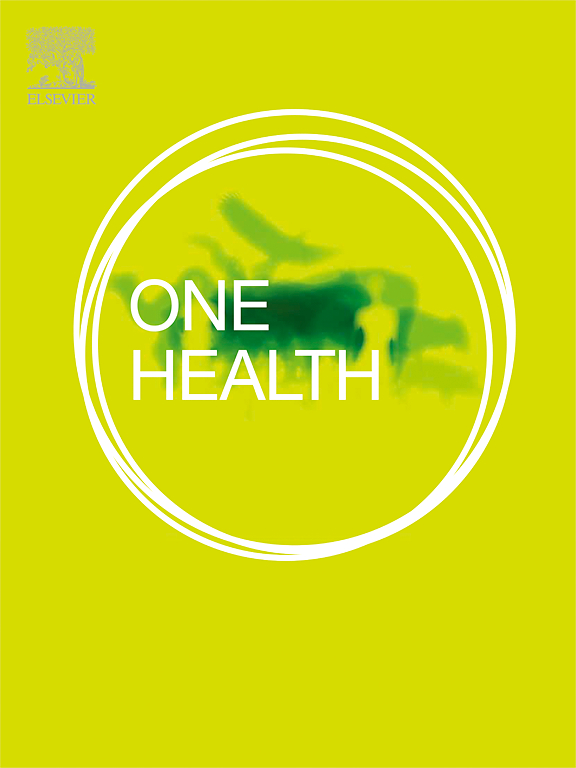Toxoplasma gondii in owned and stray dogs from a Northwestern region of São Paulo State, Brazil: Seroprevalence and geospatial distribution from a One Health perspective
IF 4.5
2区 医学
Q1 INFECTIOUS DISEASES
引用次数: 0
Abstract
Background
Toxoplasma gondii is a coccidian parasite capable of infecting all warm-blooded animals, including humans. While most infections are asymptomatic, severe manifestations can occur in immunocompromised individuals and during pregnancy. In dogs, T. gondii infection is not only of clinical significance but also of considerable epidemiological importance, given their close contact with humans and their potential role as sentinels for environmental contamination.
Methods
Peripheral blood samples were collected from owned and stray dogs at the Zoonosis Control Center in São José do Rio Preto, northwestern São Paulo, Brazil. The presence of anti-T. gondii antibodies was assessed using the modified agglutination test (MAT). Risk factors were analyzed based on individual animal data and the geospatial distribution of positive cases.
Results
Anti-T. gondii antibodies were detected in 132 out of 662 (19.9 %) owned dogs and 52 out of 211 (24.6 %) stray dogs, with an overall seroprevalence of 21.1 %. Among the risk factors analyzed, age and area were significantly associated with seroprevalence in stray dogs. Geospatial analysis identified 34 hotspots and 144 coldspots throughout the city.
Discussion
This is the first study to assess the prevalence and spatial distribution of T. gondii in dogs in this region, confirming broad environmental dissemination of the parasite. The findings highlight the importance of dogs as indicators of environmental contamination and reinforce the need for integrated control strategies under a One Health approach, particularly in high-risk areas for humans and animals.
巴西圣保罗州西北部地区养狗和流浪狗中的刚地弓形虫:同一健康视角下的血清阳性率和地理空间分布
刚地弓形虫是一种球虫寄生虫,能够感染包括人类在内的所有温血动物。虽然大多数感染是无症状的,但在免疫功能低下的个体和怀孕期间可能出现严重的症状。在狗身上,弓形虫感染不仅具有临床意义,而且具有相当大的流行病学重要性,因为它们与人类密切接触,并可能作为环境污染的哨兵。方法采集巴西圣保罗市西北部 o joss do里约热内卢Preto市人畜共患病控制中心养狗和流浪狗的外周血。anti-T的存在。采用改良凝集试验(MAT)检测弓形虫抗体。根据动物个体数据和阳性病例的地理空间分布分析危险因素。662只狗中有132只(19.9%)和211只流浪狗中有52只(24.6%)检测到弓形虫抗体,总体血清阳性率为21.1%。在分析的危险因素中,年龄和地区与流浪狗血清阳性率显著相关。地理空间分析确定了全市34个热点和144个冷点。本研究首次评估了该地区犬中弓形虫的流行率和空间分布,证实了该寄生虫的广泛环境传播。研究结果强调了狗作为环境污染指标的重要性,并强调需要在“同一个健康”方针下制定综合控制战略,特别是在人类和动物的高风险地区。
本文章由计算机程序翻译,如有差异,请以英文原文为准。
求助全文
约1分钟内获得全文
求助全文
来源期刊

One Health
Medicine-Infectious Diseases
CiteScore
8.10
自引率
4.00%
发文量
95
审稿时长
18 weeks
期刊介绍:
One Health - a Gold Open Access journal.
The mission of One Health is to provide a platform for rapid communication of high quality scientific knowledge on inter- and intra-species pathogen transmission, bringing together leading experts in virology, bacteriology, parasitology, mycology, vectors and vector-borne diseases, tropical health, veterinary sciences, pathology, immunology, food safety, mathematical modelling, epidemiology, public health research and emergency preparedness. As a Gold Open Access journal, a fee is payable on acceptance of the paper. Please see the Guide for Authors for more information.
Submissions to the following categories are welcome:
Virology,
Bacteriology,
Parasitology,
Mycology,
Vectors and vector-borne diseases,
Co-infections and co-morbidities,
Disease spatial surveillance,
Modelling,
Tropical Health,
Discovery,
Ecosystem Health,
Public Health.
 求助内容:
求助内容: 应助结果提醒方式:
应助结果提醒方式:


